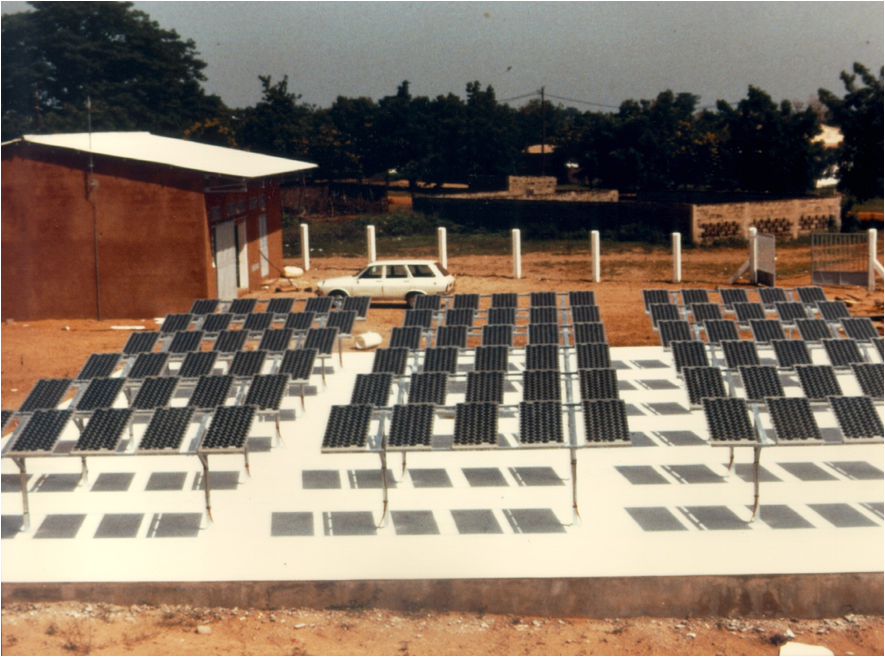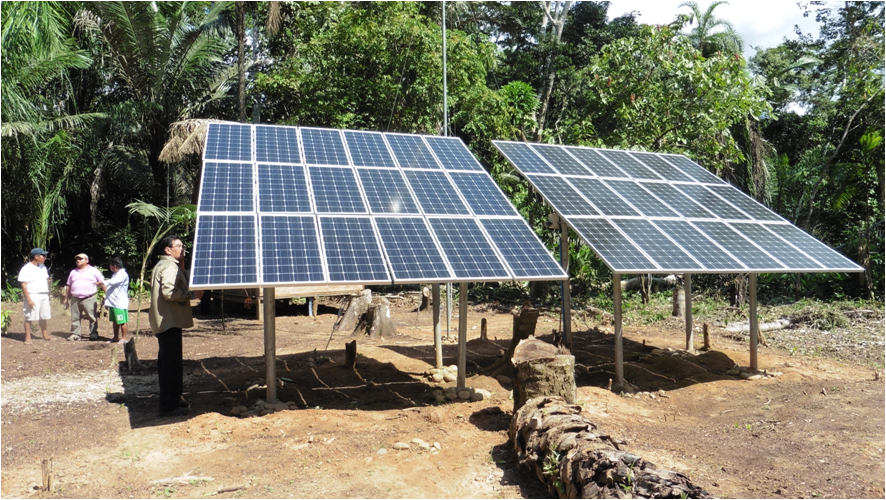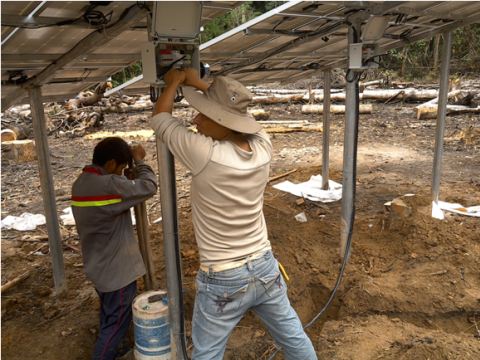PV hybrid systems
|
Although our first projects with a PV/Diesel topology date back to the end of the 1980s, in the Sierra de Segura (Spain) (1) and Notto-Diobass (Senegal), off-grid electrification has mainly been done with solar home systems. In recent years, since the early 2000s, the focus has evolved into larger and more efficient systems, called mini-grids, and usually combining different sources of energy, like PV, wind, hydro and diesel generators. Figure 1: PV/Diesel off-grid system in Noto-Diobass (Senegal) (1988). The PV modules are bifacial, a product developed by IES-UPM
IRENA published in 2015 that 5 million households are served electricity through renewables-based isolated minigrids, a 20% of the total households powered by renewables energies. This development, mainly focused in Asia, is a consequence of the cost reductions in PV technology and the high reliability of B.O.S. components. There is still an opportunity for improvement with the introduction of intelligent control elements (2) and the innovation in electrical storage. Figure 2: PV/Hybrid systems installed in San Miguel del Bala Ecolodge (Bolivia) in 2015.
Our activity in hybrid PV systems started many years ago contributing to sizing theory based on loss of load probability parameter (3). At the present, we are implementing PV/Diesel hybrid systems in ecolodges managed by local communities in preserved natural areas of Bolivia, finished the last year, Peru and Ecuador (4). This project aims to be a seed for the dissemination of this technology among ecotourism, together with the use of ICTs that improves the ecotourism business management and customer control. Figure 3: PV array installation in Chalalan ecolodge (Bolivia) |
 |
|
 |
||
 |
|
Contact person: Dr. Miguel A. Egido
Selected publications
|


